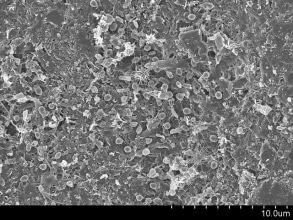Simple Tips for Model Organism-Based Work
The mouse is the favored model organism for life science researchers so much so that mice account for about 95% of all lab animals used in research. The striking similarities between the human and mouse genomes, ease of genetic manipulation and the uniformity achieved through inbred mating makes them ideal crusaders in the quest for scientific discoveries.
The meteoric rise of our super hero (read mice) has been fueled since the introduction of gene targeting technology, namely the Cre-LoxP system. This system provided a fast and efficient way of assessing gene function. It is so widely used and accepted in the scientific community that it is the gold standard method to demonstrate a gene’s function. In fact, characterization of knockout mice either conditionally or in a tissue-specific manner is a central part of many immunological and medically relevant scientific publications.
Despite the ever-increasing number of commercially available mouse models, in-house breeding and custom generation of specific gene-targeted knockout mice is still very common. In this day and age of tight funding, the time and financial investments required to sustain mice-based projects are very high, making it crucial to work with these mice in the most efficient way.
Here are a few expert tips to help you maximize the efficiency of your mouse-based projects.
1. Know Your Mice.
- a. Source – C57BL/6 is the most common mouse strain in research labs worldwide for in vivo experiments. You can buy this mouse strain from many commercial suppliers e.g. The Jackson Laboratory, Charles River Laboratories and Taconic Farms. Recent studies strongly suggest that vendor-dependent differences in the gut microbiota of mice might affect overall disease phenotypes. So, if you can’t reproduce a published result, bear in mind that your wild-type mice could be the culprit.
- b. Gene targeting technology – Gene targeting/insertion technology is so well established that university-based core facilities can issue textbook-style manuals. However, not all mice are created equal. Even the slightest modification in the gene targeting strategy can lead to varied results. For example, an N-terminal GFP fusion can yield different results than a 3’-UTR fusion. Hence, researchers should be aware of the ins and outs of the construct they use to generate the transgenic mouse in order to design cellular analysis correctly. For instance, if the reporter mice has GFP as the fluorochrome, FITC-labeled antibodies will not be suitable. Knowing the construct may also be critical to explaining potentially unexpected results e.g. non-specific deletion in an unwanted subset of cells. Even if you source a strain of mouse from a trusted collaborator, make sure you understand the targeting strategy of the transgenic mouse and save yourself from potential headaches later.
2. Develop a Naming System
I once worked on a project that involved a reporter mouse (Foxp3 RFP), a reporter fusion mouse (Foxp3cre-YFP) and Foxp3cre crossed with flox mice. As you can imagine, it quickly became very confusing to everyone involved in the project! We eventually devised a naming strategy, where the mice received unique names for use among our lab members only. With such a strategy, it doesn’t matter what names you use – we named our mice after car brands! Anything to maintain yours and others sanity!
3. Meticulous Mouse Genotyping and Management
Often, the presence of absence of a particular gene determines the phenotype of a mouse strain and overall project success. Hence, it is crucial to carefully genotype the entire mouse strain/colony at every stage of crossing. Many researchers can remember obtaining confusing experimental results because a heterozygous mouse was used instead of a homozygous mouse. There are many companies that offer genotyping services to lessen your workload. There are also many mouse colony management software tools available commercially. These will help you to maintain an electronic copy of your mouse colony particulars, including breeding history for generations etc. You can also check out our earlier article about mouse genotyping here.
4. Mice Gender Matters
Most labs prefer to use male mice for experiments to avoid any variations that may occur due to the female estrous cycle. However, depending on the disease under investigation, the sex of mice used might be important. For example, some autoimmune diseases such as lupus and rheumatoid arthritis are more common in women, and female hormones play an important role in disease pathogenesis. So, using female mice to study these conditions might mirror real world conditions better than using males, hence increasing the relevance of study results.
5. Plan Ahead
Even though mice reproduce quickly it usually takes many rounds of crossing to other strains to obtain the desired genotype(s). Furthermore, there is always a chance of ending up with a mouse strain that is a bad breeder or has a severe disease phenotype. Hence, it is always wise to have alternative breeding strategies etched out and bank up plans in place in case of unexpected delays.
Recent advances in CRISPR-based mouse gene targeting techniques have undoubtedly opened new doors for scientific advancement in health, but they have also made the task of a lab researcher very complex. We hope that the tips presented here make your mouse work somewhat easier!
Do you have any other tips and tricks for working with mouse models? Please share them with us by writing in the comments section.
Further Reading
1. https://www.nature.com/news/2002/021202/full/news021202-10.html
2. https://www.amprogress.org/animal-research-benefits
3. https://www.nobelprize.org/nobel_prizes/medicine/laureates/2007/advanced.html
4. https://www.nature.com/news/preclinical-research-make-mouse-studies-work-1.14913
5. https://www.genome.gov/10001345
6. https://research.jax.org/mousegenetics/index.html
7. Singh P, Schimenti JC and Bolcun-Filas E. 2015. A Mouse Geneticist’s Practical Guide to CRISPR Applications. Genetics. 2015 Jan; 199(1): 1–15.







